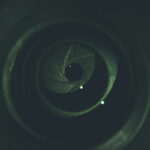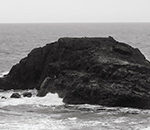Think you know all there is to know about your Canon Speedlites? Syl Arena’s latest presentation may prove you wrong. This masterclass gives a very in-depth, albiet lengthy, overview of when and how to work every last function of your Speedlites. The nearly two hour long video begins with some photography basics that all stress the importance of light. You can watch the video in its entirety below, but if you’re a bit pressed for time right now, we’ll give away a few of the highlights for you:
“To create interesting light, you have to create interesting shadows. So, look at the light and think about the shadows,” stresses Arena.
He goes on to note that we should all strive to be photographers first and retouchers last. That is, if improvements to a photograph can be done in camera rather than Photoshop, then by all means, do them in camera. After his anecdotal introduction, Arena gets to the good stuff and shows us “how to control every function of your Speedlites in the language of your choice.”
- Know when to use ETTL mode and when to use Manual mode. ETTL mode is best suited when your using your Speedlites as a fill or when the distance between the subject and Speedlites is likely to change. Manual mode works best when the distance between the Speedlight and subject are fixed and will deliver a higher level of consistency.
- SYNC Settings can make a difference. First curtain sync is adequate for snapshots whereas second curtain sync works better with medium to longer shutter speeds. High speed sync is essential, especially during sun drenched photo shoots.
- Hard light or soft light? Hard light occurs when the light is overhead; it gives you hard shadows. Hard light can be created by a light source that is smaller than the subject. Soft light occurs when the light is diffused and shows minimal shadowing. Soft light is created by a light that is larger than the subject. Speedlitess are inherently hard light, you can make them soft by using softboxes and other accessories.
- Zoom your Speedlites. This will allow the light from your Speedlites to be concentrated to one specific area of your photograph, such as in the photograph below.

Canon Speedlite Zoom Settings
These are just a few tips we took from the video. If you don’t have time to watch it in full right now, bookmark this page and come back to it when you do have time. It’s full of interesting points and is delivered to us in an easy to understand format.
Further Training on Supplemental Lighting in Photography
These are the best books I have found. They contain extremely valuable information designed to help you learn and master the complicated art of adding artificial light to photography.
Like This Article?
Don't Miss The Next One!
Join over 100,000 photographers of all experience levels who receive our free photography tips and articles to stay current:






Leave a Reply